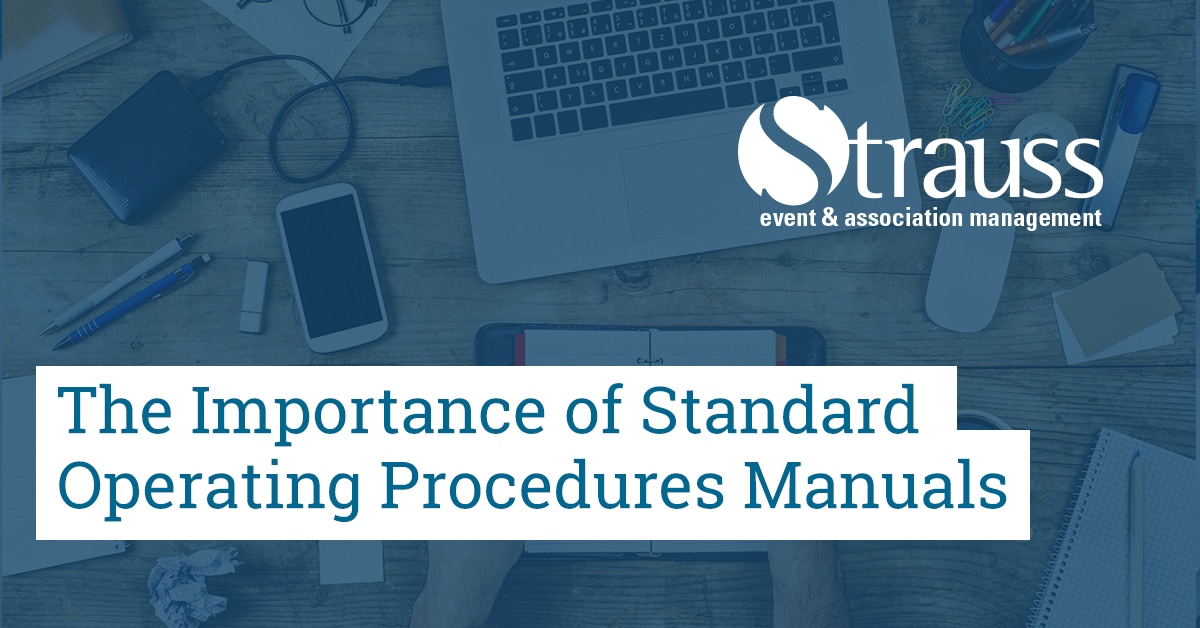One of the key ingredients to an association’s success is having policies and procedures set in place. In order to maximize client and member satisfaction, it is important to ensure that policies and procedures capture the necessary information and are kept up to date.
Imagine a scenario where an association has no vision, no objectives, no strategy, and no policies or procedures. How would that association evolve throughout the years and offer innovative and effective membership services?
Standard Operating Procedures Manuals
I recently had the opportunity to attend a training session offered at the Manitoba Tourism Education Council titled “Developing a Policies and Procedures Manual”. This session provided insight on how to format an association’s Standard Operating Procedures (SOP) Manual. An SOP is created to provide all necessary steps for productive and efficient processes so the association can be high performing.
For all SOPs, the key question that needs to be fulfilled is “Why?”. Why is the association doing what it is doing? Why is each member valuable to the association? The answers to these questions can help us understand the mission and objectives of the association and through those, provide insight into how to shape the SOP.
Creating a Standard Operating Procedures Manual for an Association
Procedures exist to ensure a smooth and efficient work environment. When creating a Standard Operating Procedures Manual, tasks for completion must be identified with a clear explanation of the importance of each task. A step-by-step explanation should be included for relevant tasks, with screen shots identifying the steps visually.
An SOP should be detailed and effective for use as a tool that a brand-new employee can use as a training guide. Below are topics that should be included in the Table of Contents:
- Introduction to the association
- Definition of the sector in which the association exists
- The association’s Vision, Mission and Objectives
- Association contact information (phone, email, mailing address, website)
- Description of Membership and membership qualifications
- Expectations and responsibilities of different roles in the association (Executive Director, Association Coordinator, Board of Directors; President, Vice-President, Treasurer, Board Members, etc.)
- Annual Calendar which includes renewal schedule, AGM dates, continuing education sessions etc.
- Procedures for all tasks
Depending on the association, the contents should reflect annual business and include all fundamentals.
Each subject should be explained in-depth in the body of the manual. To aid the reader, it is helpful to include the amount of time it takes to complete a certain task.
Other Items to Include in an Association’s SOP
Checklists and timelines are helpful resources that should be included under each topic heading. These will aid the reader in ensuring that no steps were missed in preparing for and completing important association tasks. Using a procedures checklist for all tasks ensures proper time management, standardized processes and results in action items being completed properly.
A procedures timeline is important to also be included. This should include all tasks in a calendar year, and what month they occur in. For example, if membership renewals are based on the calendar year, preparing for membership renewals should be included in the early fall. Having a timeline to follow will provide the opportunity to review specific tasks and ensure that the association tasks are being completed as expected.
Concluding Thoughts
Using an SOP will enable all association staff to stay on track of tasks whether they are a 20-year veteran or a brand-new employee. The author should create the manual to include all tasks, even the simplest, to ensure that all association activities are clearly explained for execution. For an association to achieve their vision and mission important steps cannot be missed. An SOP will act as a guide for all association staff to reference to ensure that their organization is a high performing association.
For more on policies & procedures manuals, read my colleague’s article here.

